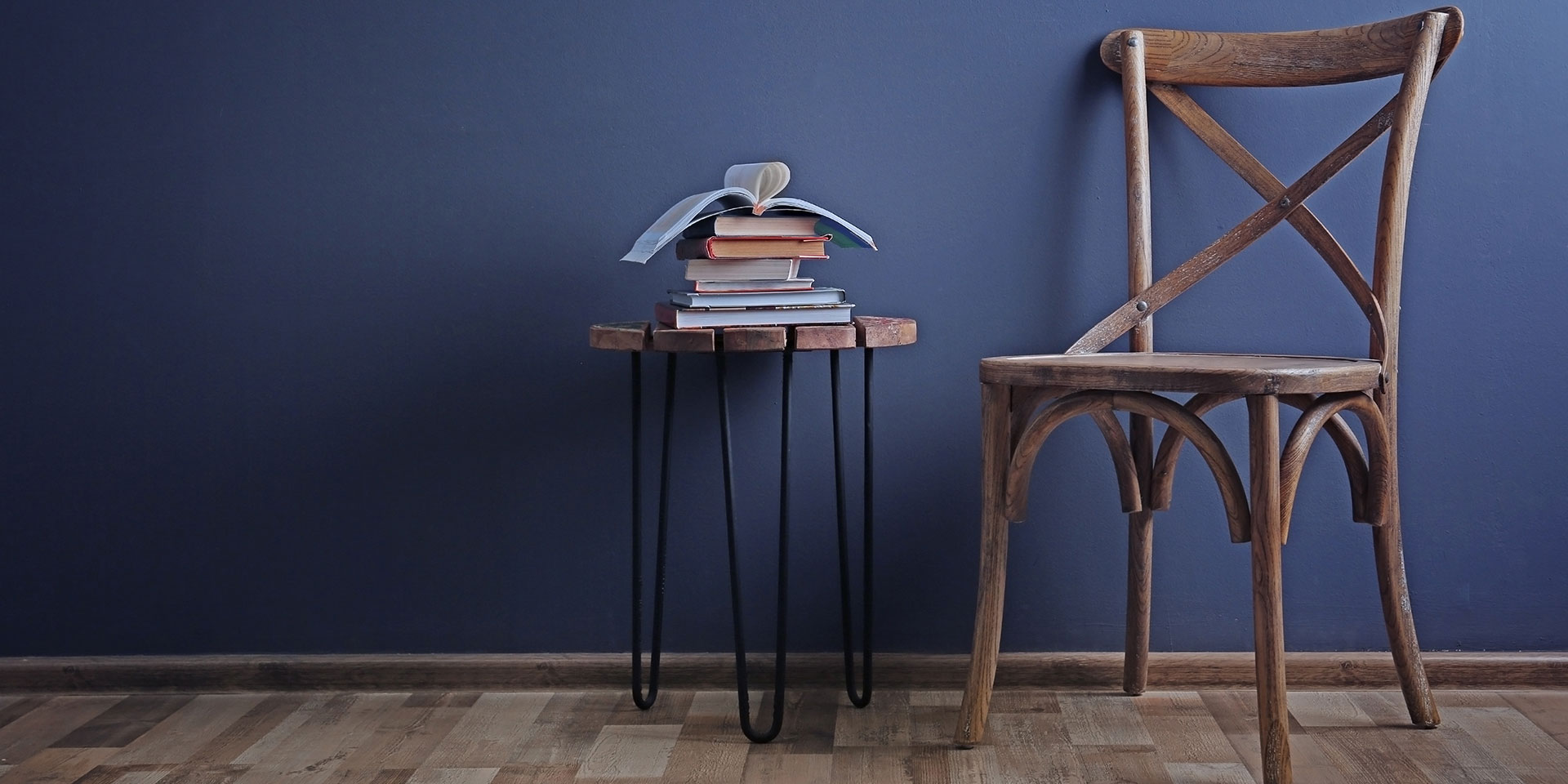An ordinary wooden chair is a metaphor that’s often used to talk about the key dynamics of faith. But it’s worth exploring further. Perhaps we could describe this as a process of developing the theory of a chair.
The first thing we might do is to describe the chair. Each of us would have an image in our minds at the mention of a simple wooden chair, but if we were asked to draw or describe that chair, we’d notice small and sometimes larger differences in what we’ve imagined and what others draw or describe. Our images of the chair might be influenced by a chair we’ve seen recently, perhaps by chair in our homes, or maybe chairs in the homes where we grew up.
Ways to describe a chair
I’ve already told you that it’s made of wood, but we could ask what kind of wood, how long ago was it made, and where. It might still be in new condition, or it could show the marks of longtime use. We could explore the history of this chair, both in its manufacture and ownership. We could also describe the shape of the chair and any decorative features it might have: is it stained, varnished, or painted? We could also talk about the size and weight of the chair as a physical object.
I have a friend who recently spent a week in a chair-making workshop. He spent a considerable amount of time crafting and shaping a wooden chair. His description of a chair would be much more in-depth than mine because he would describe the style and design of the chair as well as the techniques and tools he used in its creation.
A second approach to the theory of this chair would be to explore its physics and function as an object. A scientist or engineer could talk about the counterbalancing of forces in relation to gravity, how the construction functions to support a sitting platform at a stable height above the floor, even when the body weight of a sitter is applied. Then there’s the balance and levering effect between the weight on the seat compared to how a sitter might lean against the back support.
A third approach is that of a physiologist, who might discuss the human mechanics of sitting. Chairs are generally the shape they are because they work for human purposes. But how does a chair best function for its intended use? There are standard heights and widths for chairs based on average human dimensions, and the form and aesthetics of what we regard as a chair center around these sizing standards.
So if we were to put these various chair theories together, we might expect to come up with a super-theory of the chair. But—and here’s the point I’m leading up to—the ultimate purpose of all these forms and functions, physics and physiology, is much simpler. It all comes down to the simple act of sitting down.
Remarkably, we don’t need to know much about any of these various theoretical considerations for the chair to work—assuming that the chair is fit for its purpose—that is, it won’t collapse when a person sits on it.
However important knowledge, appreciation, and experience of various aspects of chair theory may be for the task of selecting the best possible chair to support us, accumulating all that information but never getting around to simply sitting on a chair—perhaps even being too distracted by the research process to do so—is to miss the point. The value of a chair, wherever it came from and however it was made, is how comfortable it feels and how confident we are that it will support us.
Faith
It’s the same with faith. The history, presentation, theology, and philosophy of faith are important. They’re useful for choosing whether and how to believe. In terms of Christianity, the historical and literary significance of the Bible and its central story of Jesus are key considerations. And spending time learning the theology and the intricacies of doctrine in shaping and choosing the most trustworthy faith is important.
But just as it requires trust for trustworthiness to matter, so we can know about the history and stories of a faith. We can explore its theories and theology. But for it to matter, we need to “sit down”—to rest the weight of our life on it. We need to learn to trust that it will support us.
We learn about a chair by sitting on it. We learn how the chair works and what it feels like by experiencing it by sitting on it. We discover that having a comfortable chair makes a huge difference in our lives.
Similarly, the real knowledge and understanding of faith can never come from a mere theory about faith. The super-theory of faith isn’t greater complexity and more obscure knowledge. Rather, it’s the trust we learn from practicing faith that allows us live life beyond what we can see, measure, or at times even fully understand. The experience of faith changes how we live, and it changes the lives and the world of those around us.
So thoughtfully choose a chair—but don’t forget to take a seat!
Nathan Brown is an award-winning writer and book editor. He lives in Warburton, Western Australia. A version of this article first appeared on the Signs of the Times Australia website and is republished with permission.
